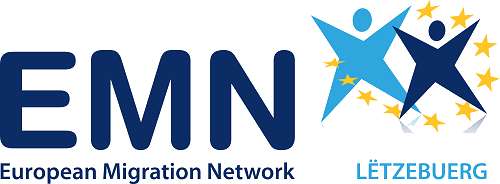
Glossaire sur l’asile et les migrations 10.0 (2024)
La version 10.0 du glossaire du REM sur l’asile et les migrations est la dernière version, mise à jour en décembre 2023. Le glossaire du
Since the first publication of the European Migration Network (EMN) Asylum and Migration Glossary in 2010, it has been a valuable resource for practitioners, policy-makers and researchers in the field of migration and asylum. By harmonising EU asylum and migration terms, the EMN Glossary offers an EU-wide multidisciplinary vocabulary of terms and concepts, translated into 27 European languages.
The current online version of the glossary (Version 10.0), updated in April 2025, comprises 550 terms and concepts that reflect the most recent developments in EU migration and asylum policy. The glossary has been updated to account for developments since the introduction of the Pact on Migration and Asylum in 2020. In particular, it already includes some terms derived from key legislative texts adopted under the Pact, such as ‘migration crisis’ and ‘migration pressure’. In the next phase, all new terms and concepts introduced by the legal instruments adopted under the Pact will be systematically integrated. This process aims to facilitate the effective implementation of its provisions. Terms currently included in the glossary that are affected by the legal provisions of the Pact will remain unchanged for as long as the relevant legal provisions remain in force and will be revised accordingly once the implementation phase has been completed.
Version 10.0 also expands the linguistic coverage of the glossary, which now includes translations of all terms into Croatian (language code: HR, according to ISO 639-1), Armenian (HY) and Montenegrin/Serbian (SR). At the same time, the existing translations into other languages have been systematically reviewed and updated where necessary to ensure consistency with the revised terminology.
The EMN Glossary provides:
A clear methodology and sources. The EMN Glossary has established a clear hierarchy of sources: definitions derived from the EU acquis are prioritised but other relevant sources, such as European/international conventions or terminology defined by other EU and international bodies, are also used. Sources are clearly indicated.
Synonyms and term relations. Where interchangeable terms are available for a single concept, a preferred term is selected and all other possible terms are listed as synonyms. Translations also take into account different national synonyms, indicating variations in EU context or national usage. In cases where EU Member States have the same nominal language, national variations indicate whether a synonym is preferred in a particular country or in the EU context. This should be particularly interesting for translators. Term relations, namely broader terms, narrower terms and related terms, are also taken into account.
Complement the definition by clarifying the scope of the concept, its understanding in different contexts, and indicating web sources with further information.
User-friendly access. The EMN Glossary is available as an interactive online version, accessible via the EMN website, as a free mobile application, and as a printed edition.
The EMN Glossary app
The app allows for convenient access to the terms translated into 27 European languages. Definitions can be browsed in English, Finnish, French, German, Greek, Italian and Latvian. It provides an alphabetical search, browse functions for the terms as well as a visual navigation of the relationships between terms.
Download it now:

La version 10.0 du glossaire du REM sur l’asile et les migrations est la dernière version, mise à jour en décembre 2023. Le glossaire du
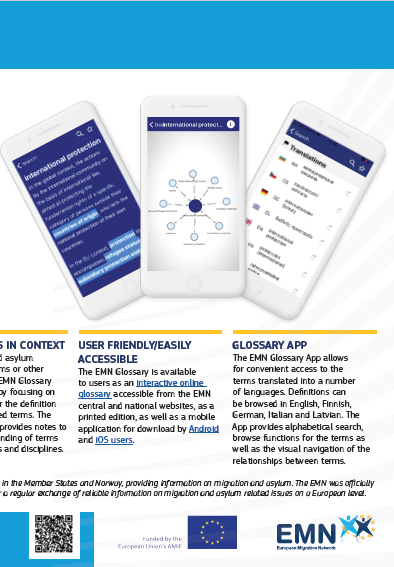
Have a look at our glossary flyer to gain a quick and simple overview on what the glossary is all about.
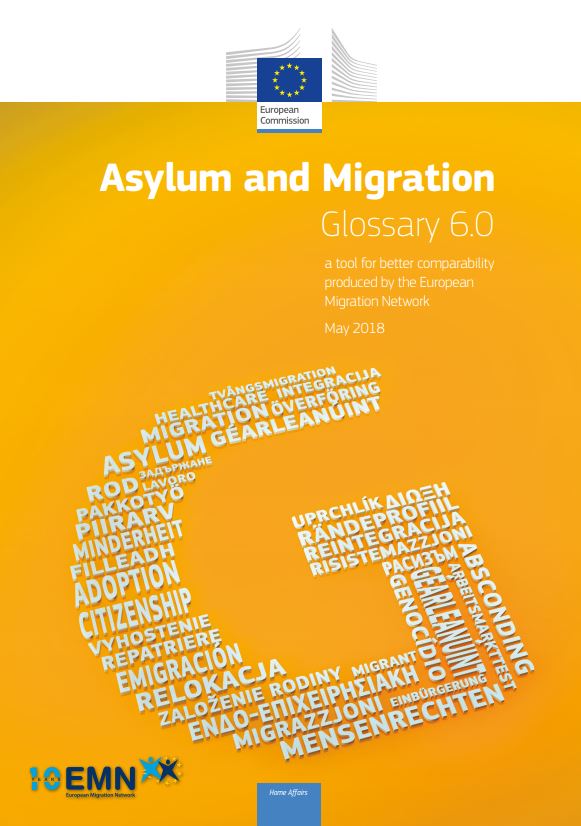
The EMN Asylum and Migration Glossary 6.0 is a completely revised and updated version of the EMN Glossary that was first published in January 2010

Das EMN-Glossar zu Asyl und Migration in der vorliegenden Version 5.0 ist eine Aktualisierung des Glossars, das erstmals im Januar 2010 erschienen ist und danach
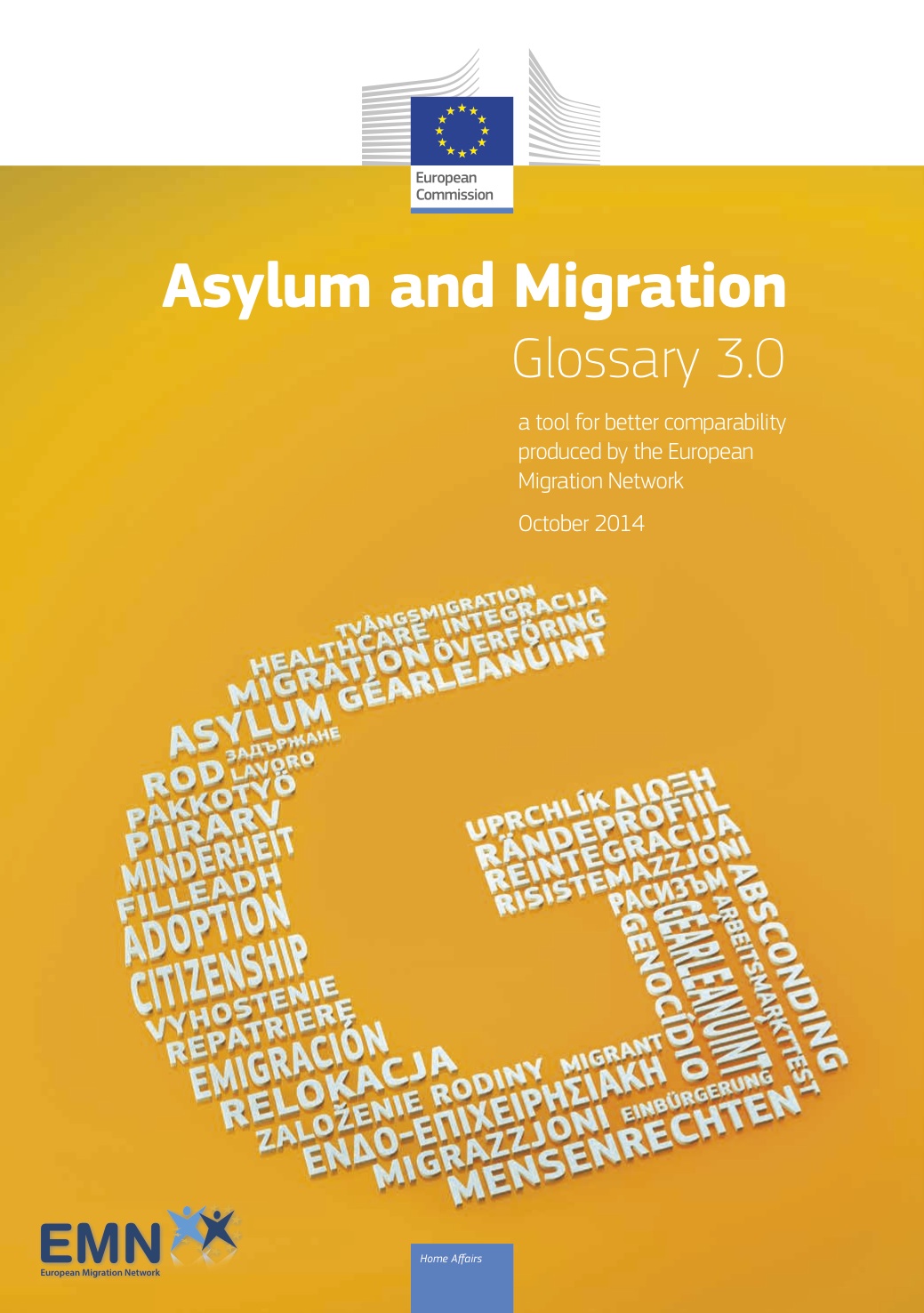
The EMN Asylum and Migration Glossary 3.0 is an updated version of the EMN Glossary that was first published in January 2010 and later updated
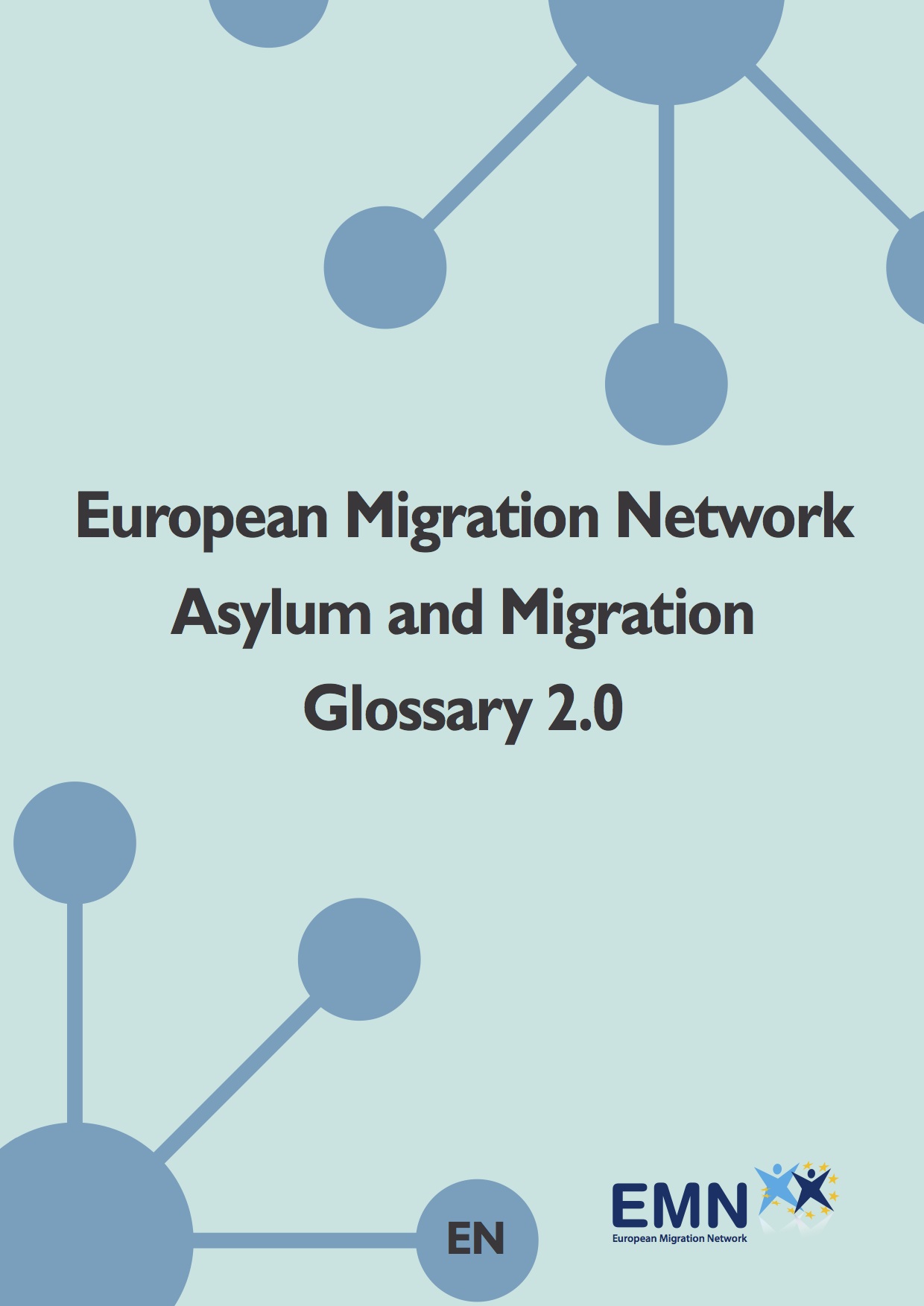
This is an updated version of the first EMN Glossary published in January 2010. As well as including several new terms and translations, plus an
